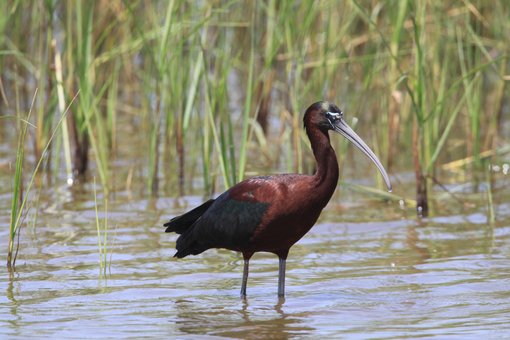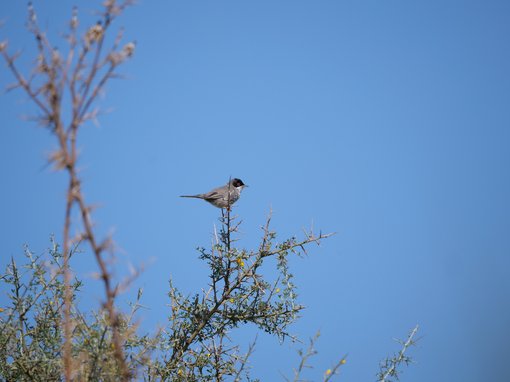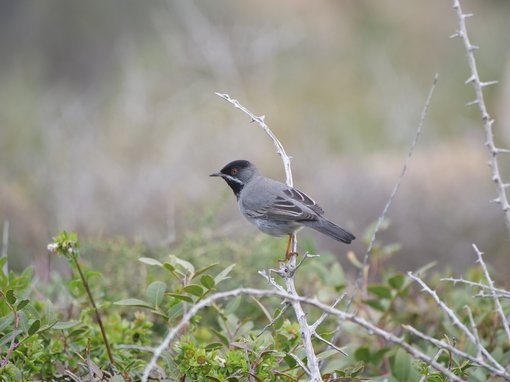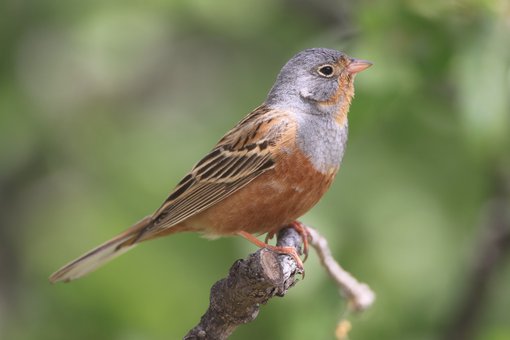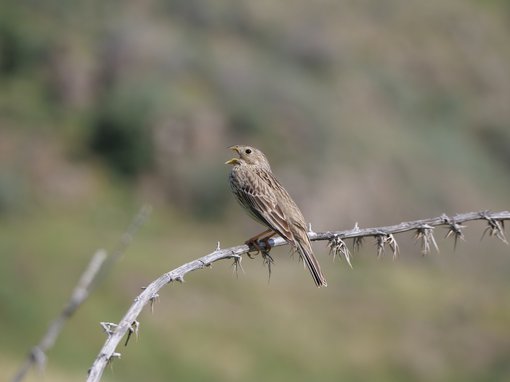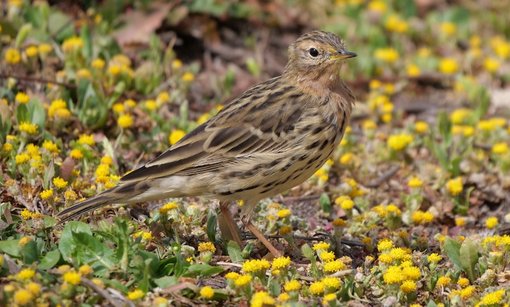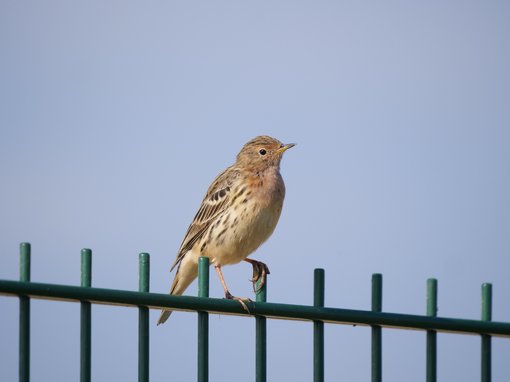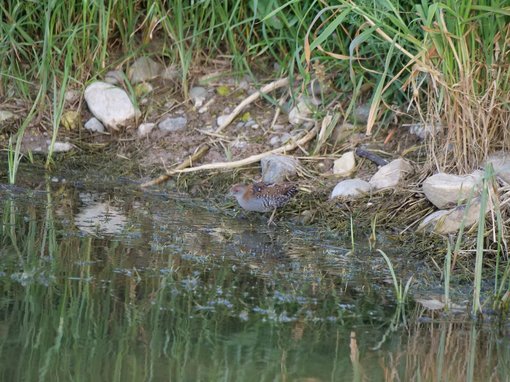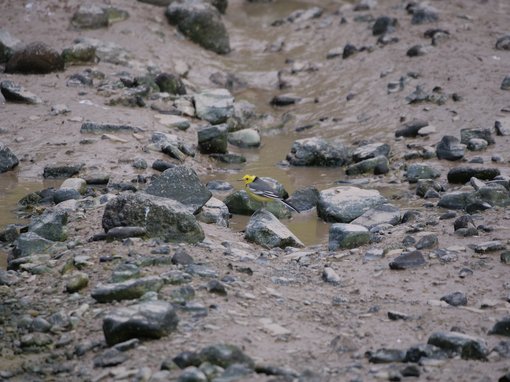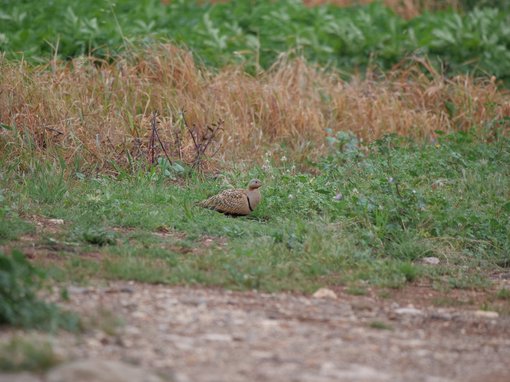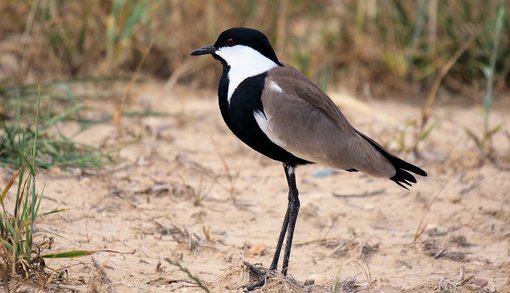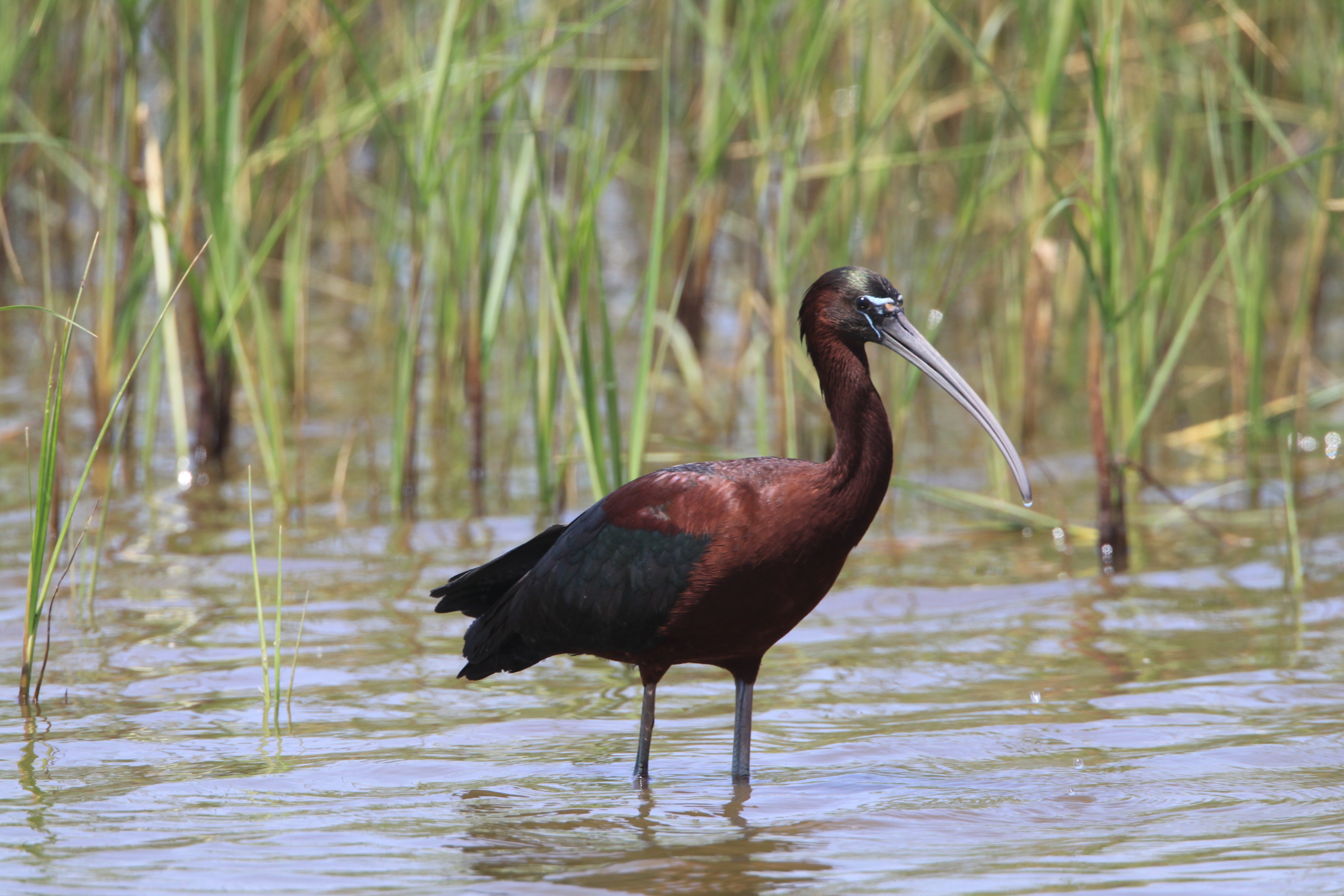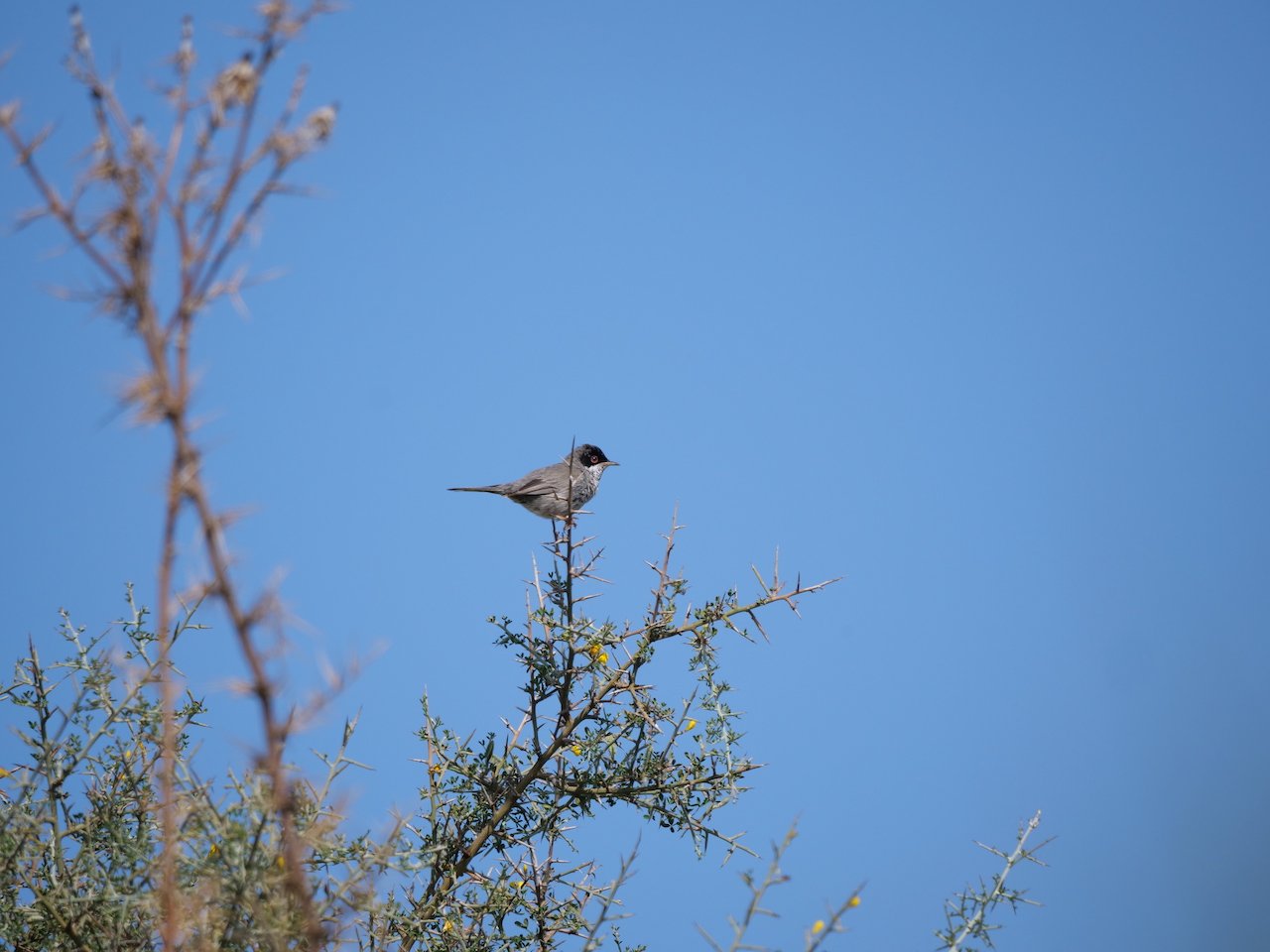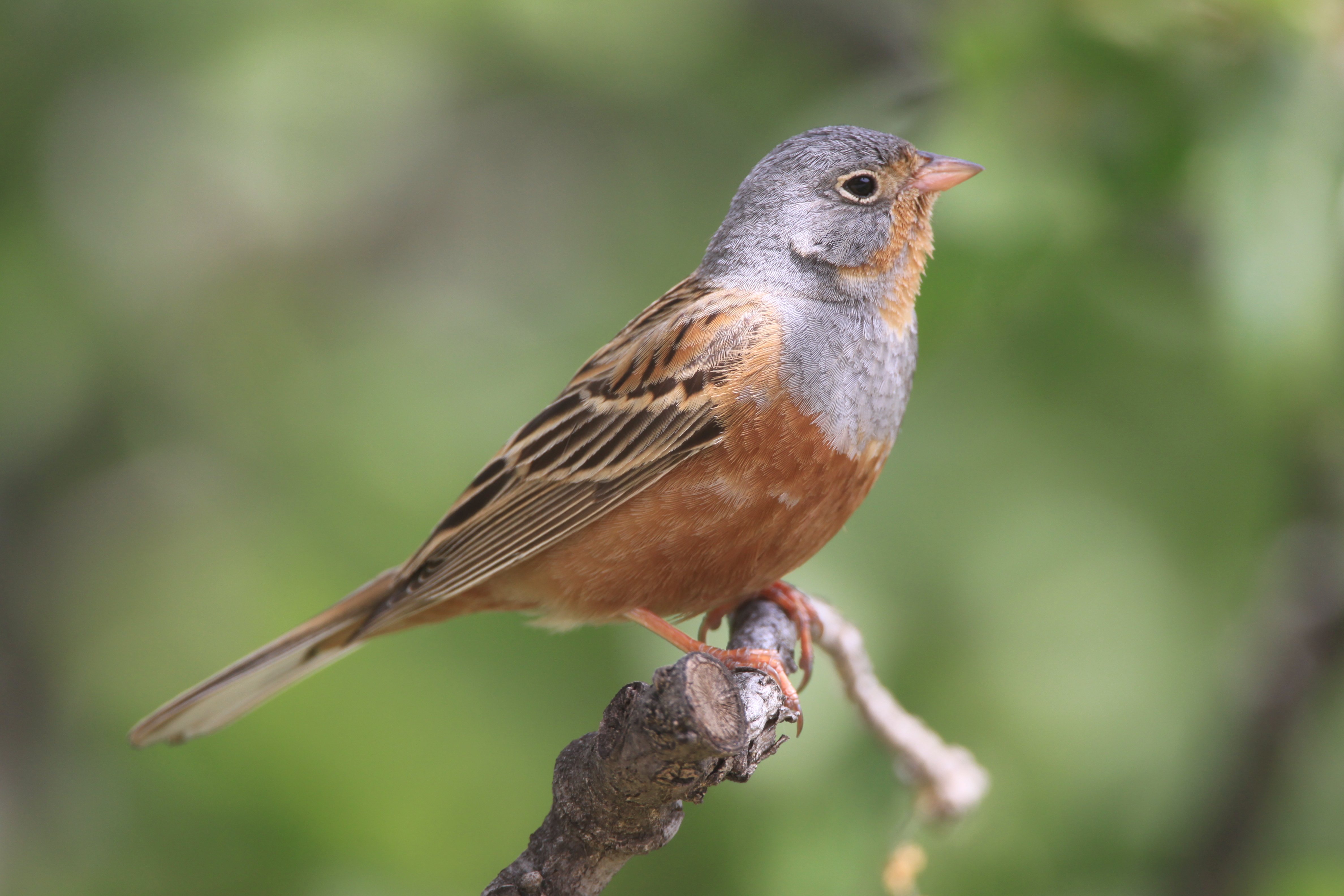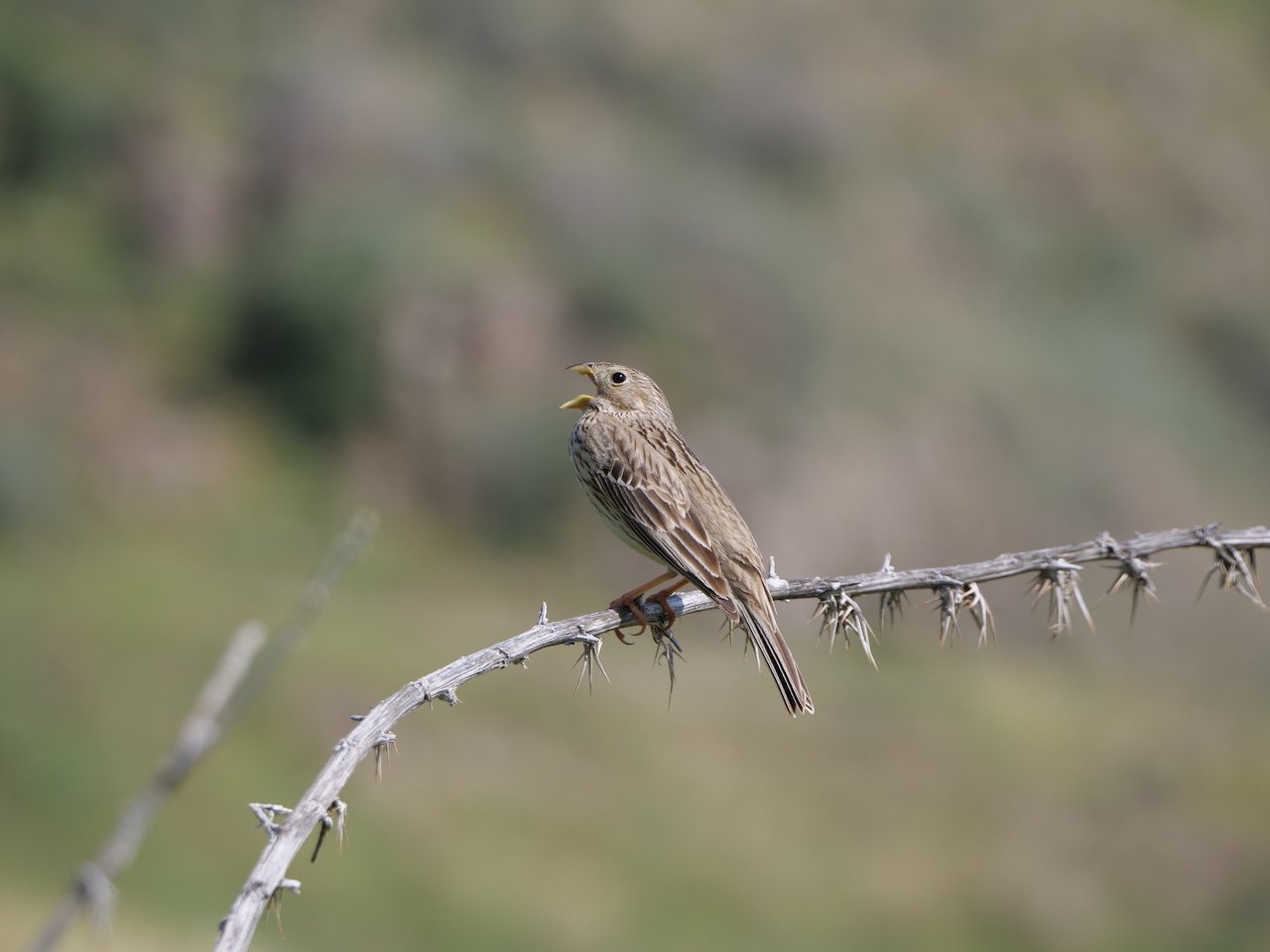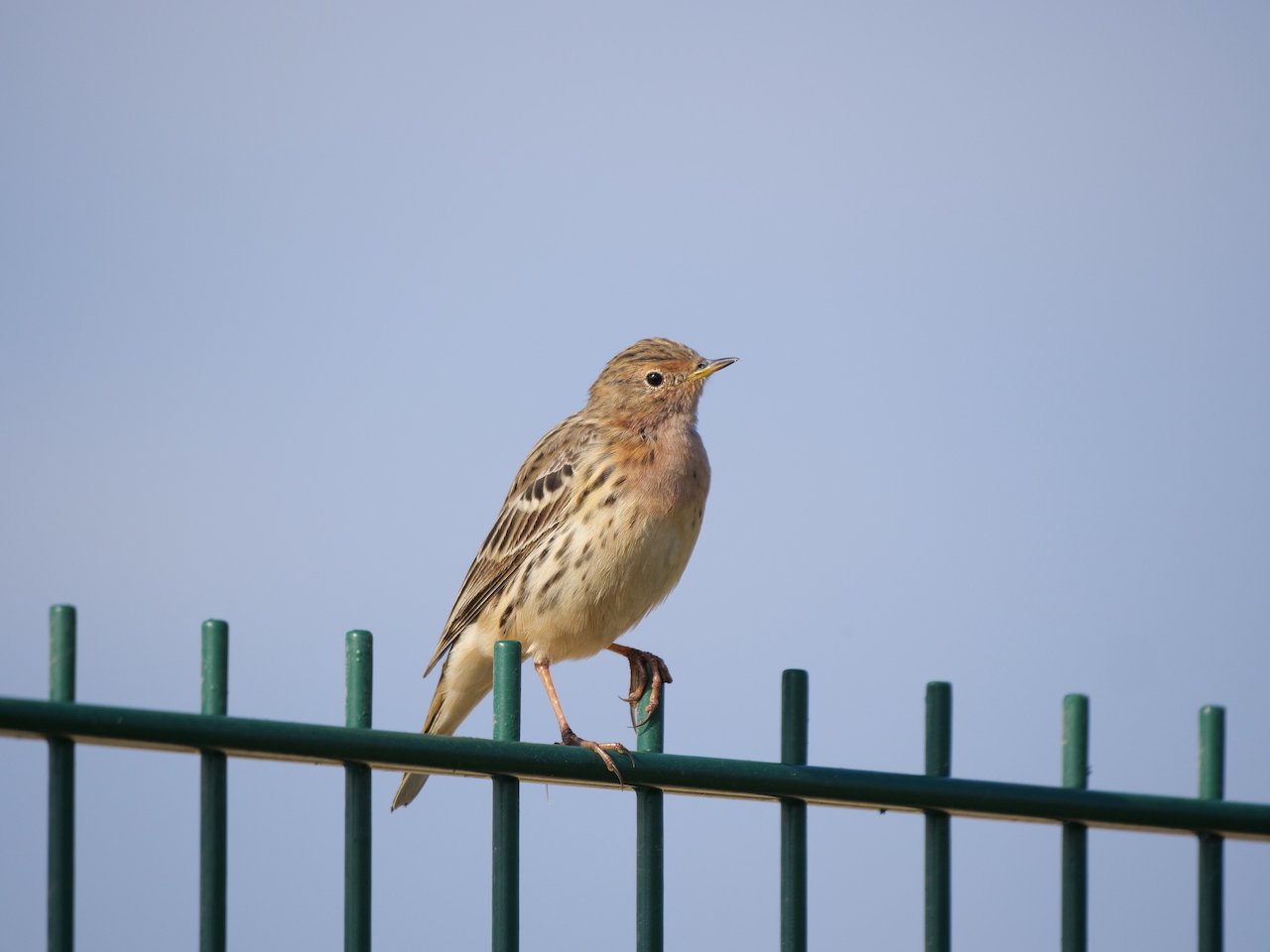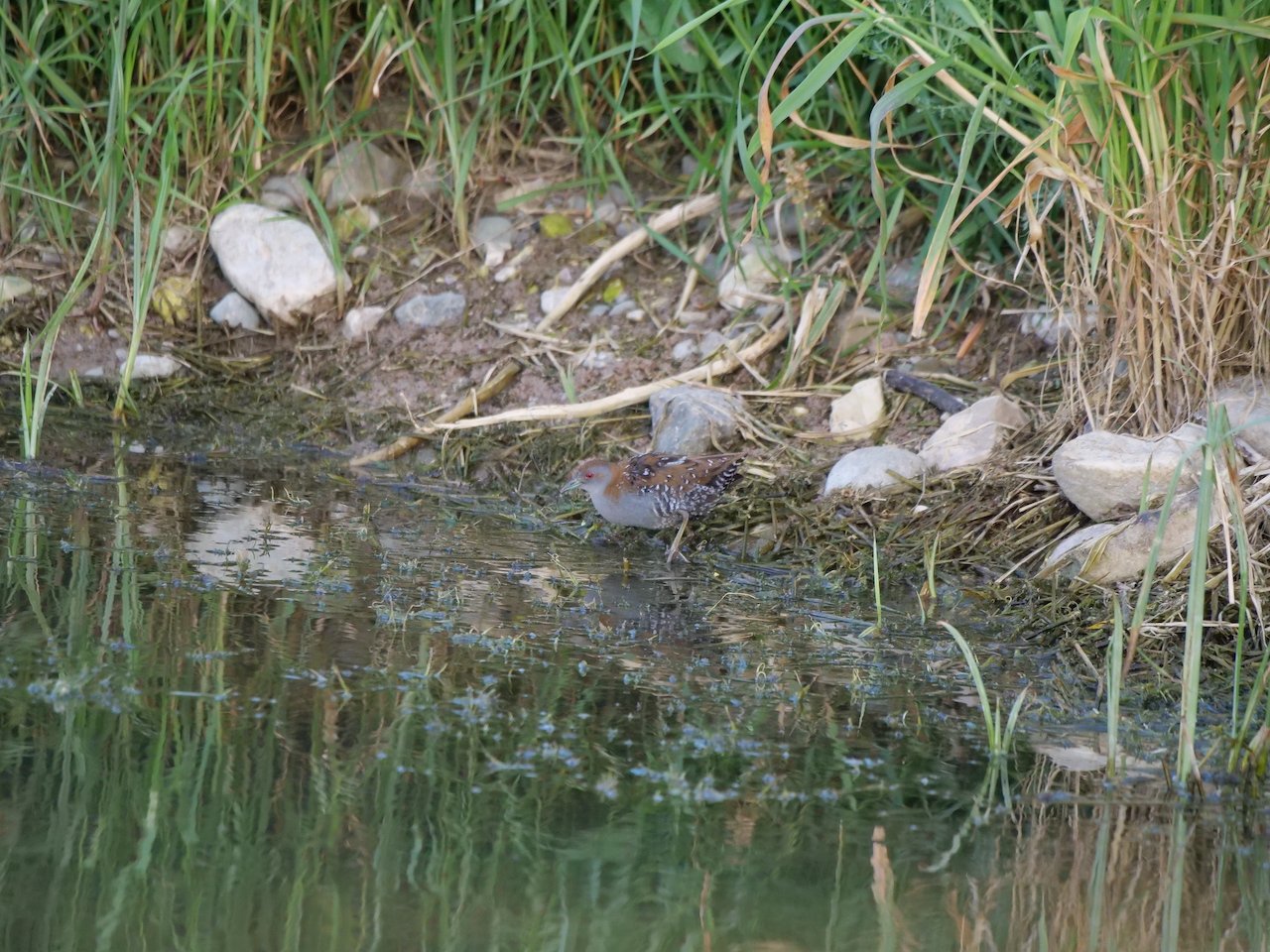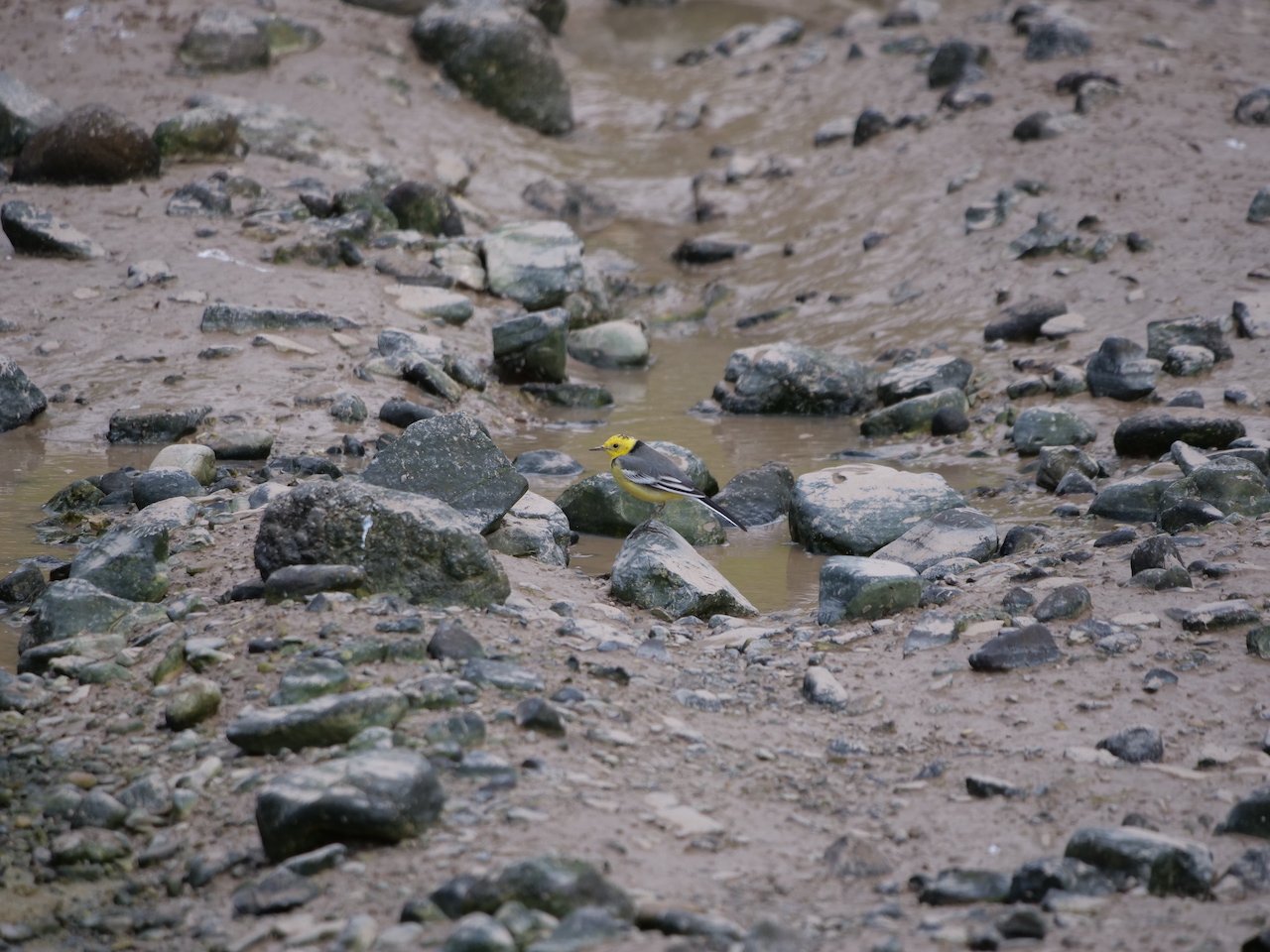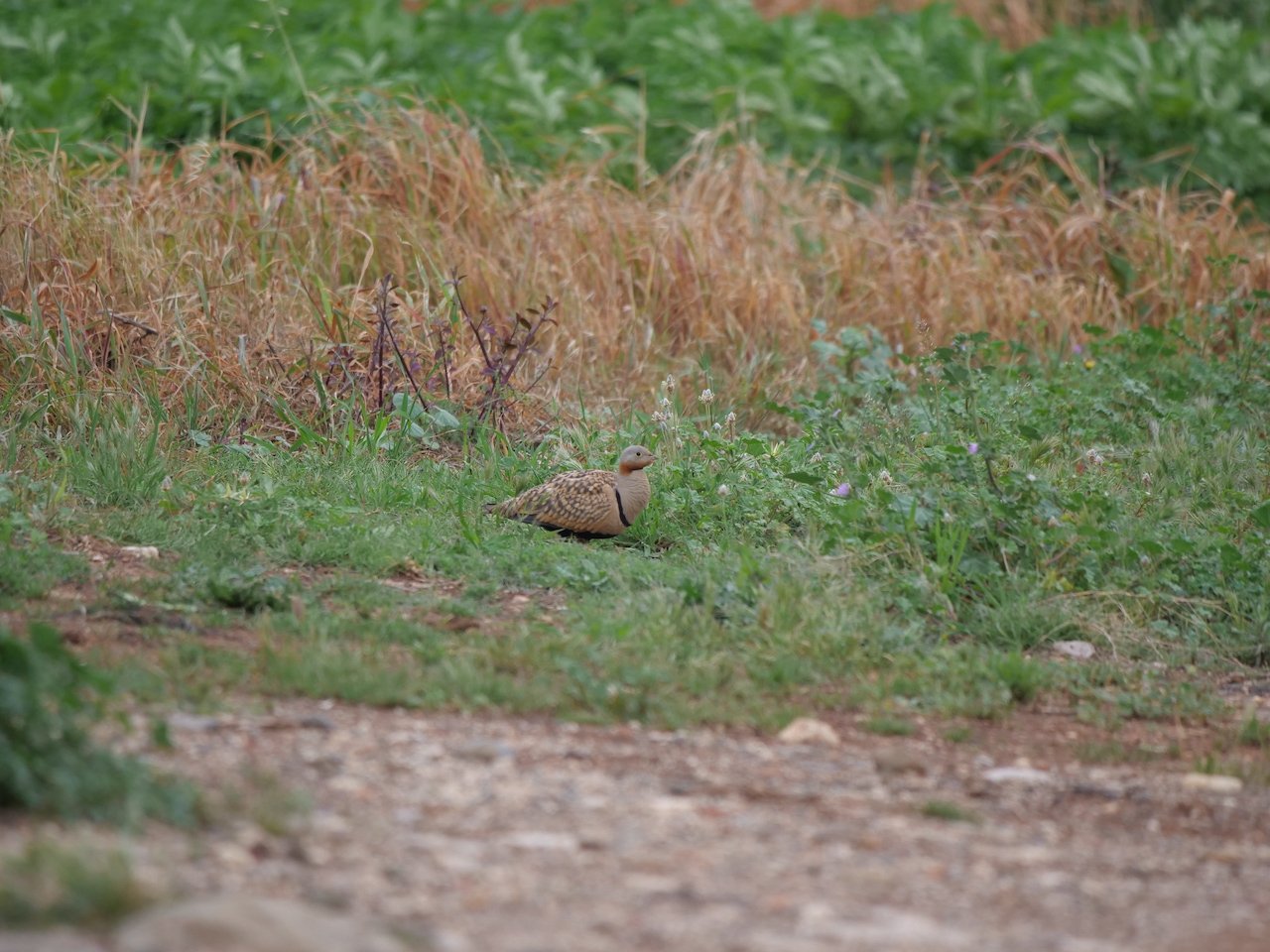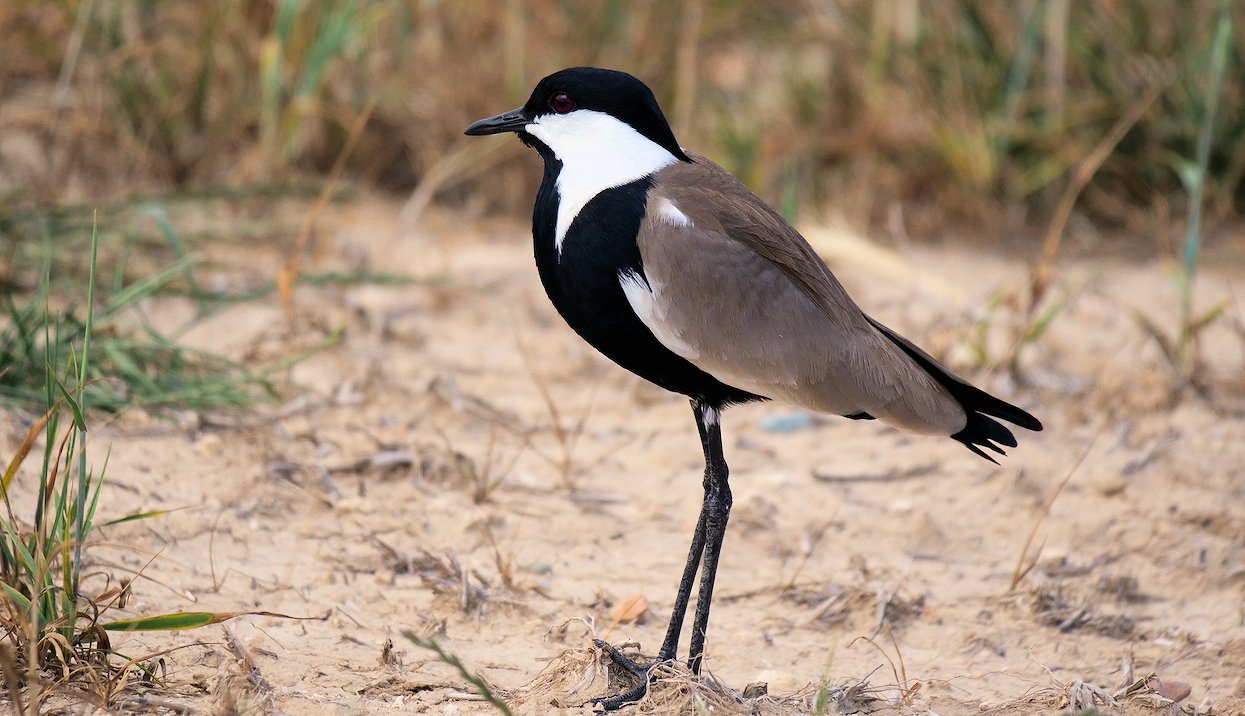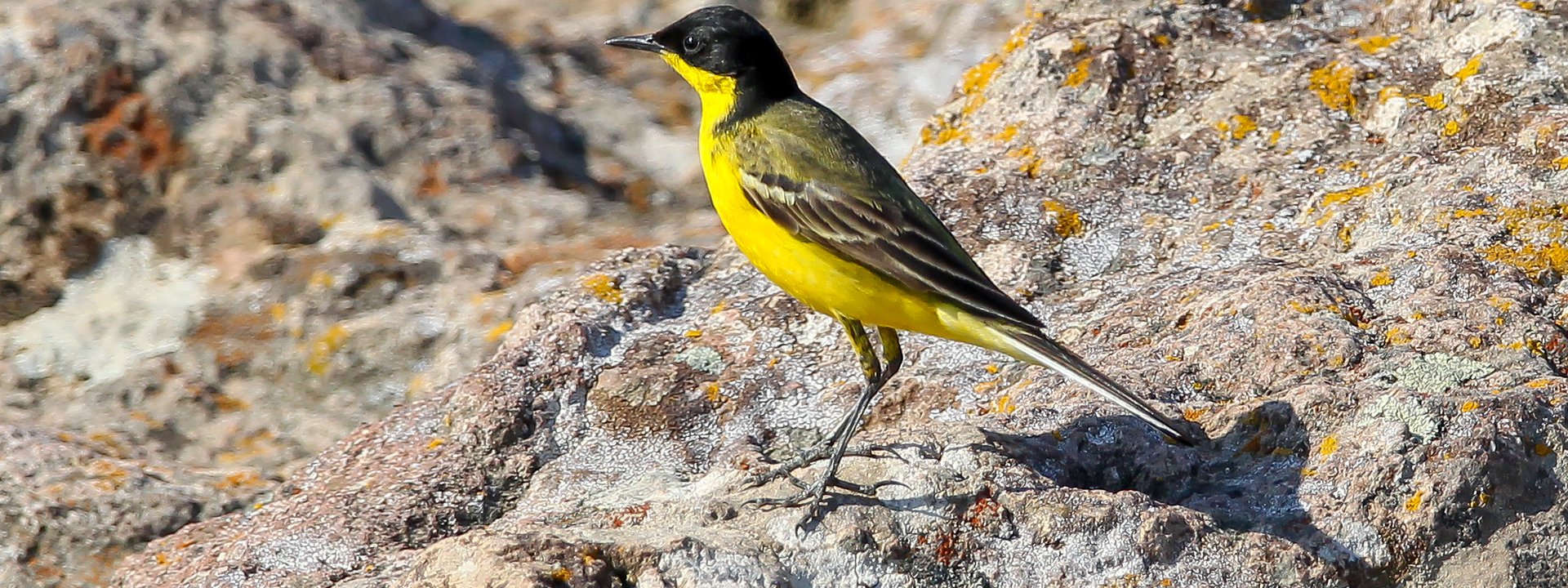Cyprus
Spring Migration on Aphrodite’s Isle
An 8-day single-centre, small group birdwatching tour to Cyprus
Limosa’s birding tour to Cyprus offers some of the best bird migration anywhere in the Mediterranean and as the spring warms up on "Aphrodite’s Isle", so too does the northward bird migration with the likes of Masked Shrike, Collared Flycatcher and Cretzschmar’s Bunting arriving.
From our base at Paphos, we are ideally placed to see parties of Purple Herons, Bee-eaters, Black-headed Wagtails and other migrants as they come in off the sea.
Add the presence of three endemic breeding species, Cyprus Scops Owl, Cyprus Warbler and Cyprus Wheatear, plus a number of distinctive island races, and the appeal of this single-centre birdwatching tour to Cyprus is irresistible!
Tour Dates & Prices
Tour Highlights
- Early April on Cyprus sees the peak of spring bird passage through the island
- Classic spring falls of migrants possible - anywhere, anytime!
- 3 endemic breeding species: Cyprus Scops Owl, Cyprus Warbler and Cyprus Wheatear
- Other specialities include Black Francolin, Little Crake, Rüppell’s Warbler, Masked Shrike
- Brilliant pink Greater Flamingos on Lake Akrotiri and Spur-winged Lapwing
- 7 nights at a good hotel close to Paphos headland - the island's premier migration hotspot
- Small party size with a maximum of 10 participants
- Expertly led by Limosa's Gary Elton, making his fifth visit to the island
Outline Itinerary
Fly to Larnaca. Transfer to our comfortable hotel for the week. Night Paphos
Birdwatching on Cyprus, seeking the island's special birds and enjoying the spring bird migration including visits to Paphos, Phassouri, Akrotiri, Akamas and the Troodos Mountains
Morning Paphos. Fly back to UK from Larnaca
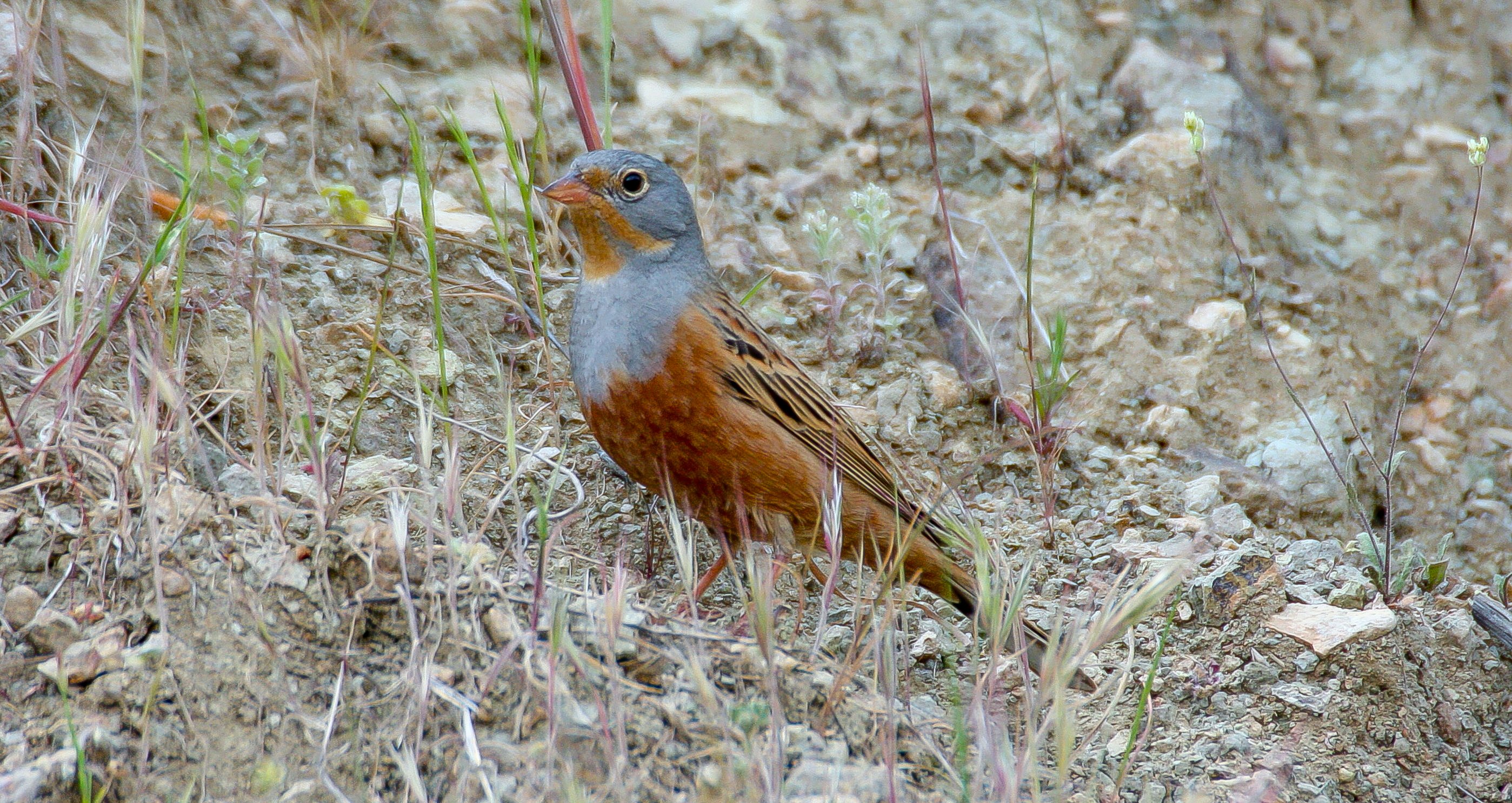
Beneath the shadow of the beautiful Troodos Mountains, a buzzing, insect-like song betrays the presence of a striking Cyprus Wheatear perched atop a Calabrian Pine. Far below, along the island’s picturesque south coast, the black head, white whisker and boldly-spotted underside of a jaunty male Cyprus Warbler, singing atop a yellow-flowered Genista, is etched against a backdrop of dazzling limestone cliffs that plunge into the azure waters of the Mediterranean. While in a quiet grassy valley stretching inland from the coast, the rhythmic calls of Black Francolin and Chukar float over flower-filled meadows to herald the start of another exciting day’s birding.
Lying in the eastern Mediterranean, Cyprus sits across the migration route of many birds flying north from sub-Saharan Africa, through Egypt and on into Eastern Europe and is one of the most exciting places we know to watch spring migration. Not knowing what might turn up next is all part of the fun!
We will be based at Paphos, within easy distance of one of the best birdwatching areas on Cyprus: Paphos headland and the island's west coast.
Visible migration can be exciting in early April and we might see flocks of up to six species of heron going by over the sea, Hoopoes, Bee-eaters, larks and wagtails flying in to make landfall and Common, Pallid and Alpine Swifts with Red-rumped Swallow sweeping overhead.
Each new day brings fresh surprises... One morning perhaps a stunning Masked Shrike hunting from a Carob tree, while next day we might find an equally spectacular Collared Flycatcher or a Rüppell’s Warbler skulking about the bushes. In spring, waders along the shore can include the scarce Greater Sand Plover, in striking breeding dress. Plus, you never know, a rarity or two might just turn up too - Demoiselle Crane, Desert and Hooded Wheatears, Caspian Stonechat and Cinereous Bunting have been among surprise finds on past Limosa tours.
Like so much of the rest of the island, the areas around Paphos headland should be a blaze of colour at this time, carpeted with yellow Crown Daisies, scarlet poppies and pink Convolvulus. In the afternoons, the colour changes to blue as the lovely Barbary Nut Irises open in the warm spring sunshine.
During our stay, we plan to visit several key wetlands, including the ‘recently discovered’ Agia Varvara pools along the Esouza River and the reedbeds at Phassouri. To the east, the vast Salt Lake at Akrotiri holds Greater Flamingos, while Oroklini Lake (one of only seven natural wetlands in Cyprus) is the haunt of some smart breeding species including Spur-winged Lapwing.
On another day we plan to drive into the snow-capped Troodos Mountains, where the island’s own ‘chocolate coloured’ Coal Tits are well worth looking for. We also intend to explore the scenic Akamas Peninsula, which is excellent for wildflowers and highly attractive in spring to migrating flycatchers and warblers. One evening, we will drive a short distance out of town to try a good spot to look and listen for Cyprus Scops Owl.
We have again chosen to stay in one strategically placed hotel for the whole week to make this a most relaxed birdwatching holiday with plenty of time to explore.
Limosa first visited Cyprus in 1999 and we have been lucky to see many superb birds there over the years. Our April 2024 tour will be guide Gary Elton's sixth visit to the island for Limosa so why not join him for all the excitement of a spring migration tour with more than a hint of the Middle East.
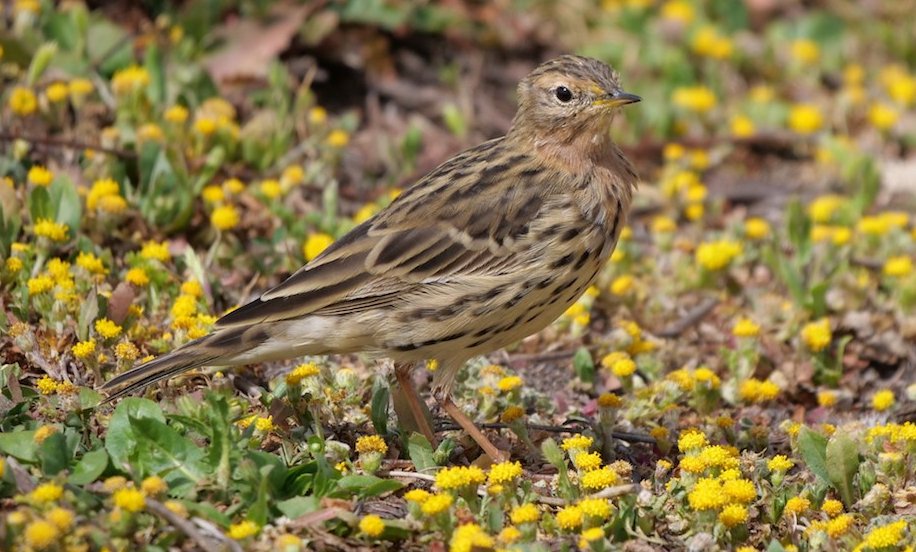
Day 1
FLY TO PAPHOS
Our spring birdwatching tour to Cyprus begins with a flight to Larnaca. On arrival, we travel the short distance to our Paphos hotel, which will be our base for the next seven nights.
Being based at Paphos allows us easy access to Paphos headland for our early morning walks. Night Paphos
Days 2 - 7
BIRDING ON CYPRUS, INCLUDING: PAPHOS, ASPROKREMNOS, MANDRIA, AGIA VARVARA, PHASSOURI, AKAMAS, AKROTIRI SALT LAKE, OROKLINI WETLANDS AND TROODOS MOUNTAINS
The area around Paphos, on the island’s west coast, makes a superb base for a week’s birding holiday. Immediately to the southwest of town, Paphos headland is a World Heritage Site famed for its ancient mosaics and tombs but it also happens to be one of the best sites to watch bird migration on the whole of the island! In early April, the neat walled fields of rank grasses and wildflowers, with shady figs, carobs and olives, can hold flycatchers, warblers and shrikes and are well worth checking.
A morning’s walk around the lighthouse and headland can produce some really great birds. Perhaps a Wryneck will pop up in front of us or we may find Hoopoe, Red-throated and Tawny Pipits, and Crested and Short-toed Larks along with exciting eastern Mediterranean migrants such as Eastern Bonelli’s, Eastern Olivaceous, Eastern Orphean and Rüppell’s Warblers, the attractive Cretzschmar’s Bunting and Isabelline, Northern and Black-eared Wheatears.
Overnight falls can also bring several races of Yellow Wagtails, including the lovely Black-headed. The rugged limestone outcrops attract the handsome Blue Rock Thrush and passage waders can sometimes include Greater Sand Plover in smart breeding plumage.
Offshore, we may spot parties of Yelkouan Shearwaters drifting by, or marvel as flocks of migrating Black-crowned Night and Squacco and Purple Herons pass by. If we are lucky, rarities may drop in and our 2019 group, for example, saw both Hooded Wheatear and Caspian Stonechat here!
We shall also pay a visit to the remarkable third century Roman mosaics near the Byzantine fortress overlooking Paphos harbour. These are regarded as amongst the finest anywhere in the Mediterranean. Close by is the extensive complex of the Tombs of the Kings, itself another good site for migrant birds.
On one evening, we will plan to visit Mavrokolympos Dam, where the distinctive two-note call of Cyprus Scops Owl can be heard from trees close to the road. With a little luck, we will hopefully be able to find one too!
Not far from Paphos is the Esouza Valley, where pools along the gravel riverbed at Agia Varvara have recently lured many migrants including both Baillon’s and Little Crakes. Close to the towering Asprokremnos Dam, Anarita Park can hold passing raptors such as Lesser Kestrel and Red-footed Falcon and Chukar and newly arrived Great Spotted Cuckoos might also be seen and heard in the valley. The fringing scrub here is a good spot to try for the cracking Cyprus Warbler which is a declining species and one which breeds only on the island of Cyprus.
Rocky slopes above the dam are a favoured haunt of another of the island’s delightful endemics, the dapper Cyprus Wheatear. The scarce Finsch’s Wheatear sometimes lingers in the area (we have been lucky to see this winter visitor to Cyprus on several previous tours) and we have another opportunity to catch up with the elusive Black Francolin.
Although often skulking, this handsome eastern Mediterranean gamebird is quite common in the island’s arable coastal strip and, with a bit of luck, we should see them well during our stay. North of the dam are valleys that may hold breeding Long-legged Buzzard and Bonelli’s Eagle, so will make sure we keep our eyes to the skies!
To the east of Paphos, the coastal fields and beach around Mandria have proven to be another hotspot for migrants, notably pipits, wagtails and larks. Species to look for include Black-headed Wagtail, Red-throated and Tawny Pipits and in 2018, a superb Caspian Plover turned up here for us! Perhaps a Pallid Harrier will ghost across the fields as this is the ideal time to see these fabulous birds of prey. The beach here is one of the more regular 'stop offs' for Greater Sand Plover.
One day we plan to head further east towards Larnaca, visiting both the freshwater wetlands and threatened reedbeds at Phassouri and the newly created reserve at Oroklini.
Though much will depend upon water levels, transient waders can include Marsh Sandpiper and Great Snipe, while both Spur-winged Lapwing and Black-winged Stilt have bred. Marsh Harriers patrol the pools, whilst migrants such as Garganey, Glossy Ibis and various herons can drop in.
At first sight, the nearby Akrotiri Peninsula is a seemingly barren and featureless wasteland. The centre of this area is dominated by a vast Salt Lake, with its pink ribbon of Greater Flamingos shimmering in the heat haze. Though the size of the lake can make birding tricky, in spring, the smaller pools around its shore often prove attractive to Kentish Plovers and pink-washed Slender-billed Gulls. Extensive areas of halophytic Arthrocnemum scrub provide a home for Spectacled Warblers and both Montagu’s and Pallid Harriers pass this way, as do the Red Arrows that train at Akrotiri RAF base in spring.
Weather permitting, we will travel up into the spectacular Troodos Mountains. In early April, they can still have snow on their upper slopes and one could almost forget that this is the Mediterranean as the road winds ever higher through extensive forests of Calabrian and Black Pine. While the scenery would be reason enough to visit, these beautiful mountains are home to a number of birds that have evolved distinctive isolated populations: 'chocolate' Coal Tits, dusky-headed Jays and large-billed Red Crossbills await, along with 'Cyprus' Short-toed Treecreeper and a number of other endemic or near-endemic races of otherwise familiar birds.
Our route to and from the mountains passes through a picturesque undulating terrain of ‘forgotten’ valleys that are a patchwork of almond groves, vineyards and hay meadows, brimming with wildflowers. Chukar and Great Spotted Cuckoo are possible here, along with calling Quail, perhaps a Long-legged Buzzard overhead and lots of ‘Eastern’ Jackdaws, with their distinctive silver neck collars.
Above Paphos, at the north-western corner of the island, the extraordinary Akamas Peninsula is famed for its glorious coastal scenery ablaze with wildflowers in springtime. The Baths of Aphrodite are a lovely, sheltered spot and well worth a visit. This area is good for Cyprus Wheatear and the recently split Cyprus Scops Owl and frequently attracts migrants such as Masked, Woodchat and Red-backed Shrikes, Eastern Bonelli’s Warbler and Pied, Collared and Semi-collared Flycatchers. Wildflowers include the endemic Cyprus Gladiolus and many orchids.
We have chosen to be based in one strategically placed hotel for the whole week to make this a most relaxed tour with plenty of time spent on gentle walks enjoying the birds and scenery of this compelling island. One thing is certain, with so many wonderful places to visit we shall never be left wanting for things to do!
The lure of the 'unexpected' is bound to call us back to Paphos and neighbouring headlands. Whether it is scanning the grassy slopes for migrant Tawny Pipits and Ortolan Buntings, watching in awe as a ghostly male Pallid Harrier floats by or simply pausing to enjoy one of the many colonies of smartly dressed Spanish Sparrows... In our experience, Cyprus in early April provides some of the most exciting birding in Europe! Six further nights Paphos
Day 8
PAPHOS HEADLAND, FLY TO UK
We should have time this morning for a last look around Paphos before a transfer to the airport for our flight back to the UK, where our spring birdwatching tour to Cyprus concludes.
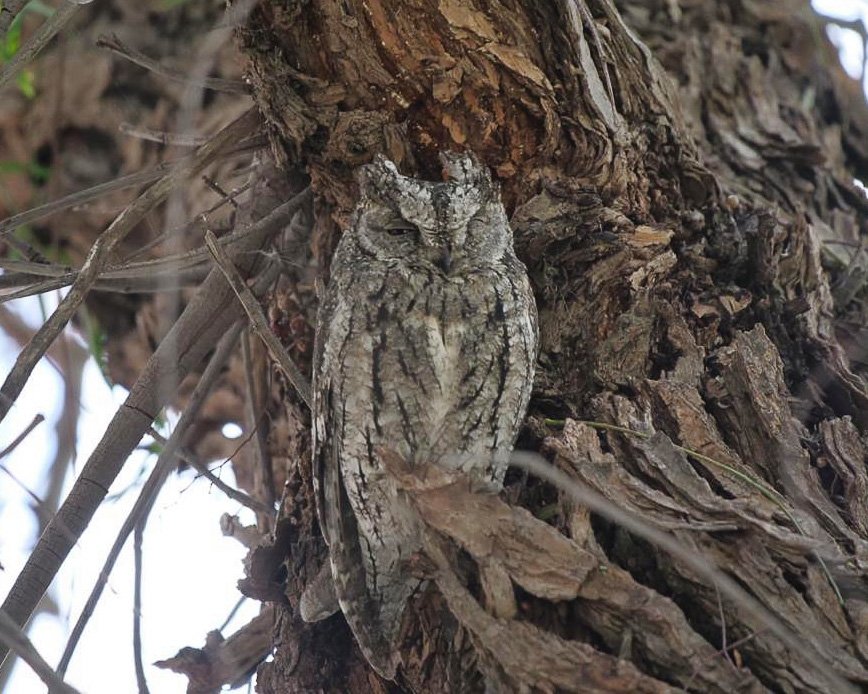
WHAT TO EXPECT
Cyprus in early April boasts some of the best bird migration anywhere in the Mediterranean. As the spring warms up on ‘Aphrodite’s Isle’, so too does the northward bird migration with the likes of Masked Shrike, Collared Flycatcher and Cretzschmar’s Bunting arriving. Paphos is ideally placed to see parties of herons, bee-eaters, lark, wagtails and other migrants as they come in off the sea.
Add the presence of three endemic breeding species, Cyprus Scops Owl, Cyprus Warbler and Cyprus Pied Wheatear, plus a number of distinctive island races, and the appeal of this single-centre birdwatching tour to Cyprus is irresistible!
Spring weather in Cyprus can be changeable but this brings the birds! Typically bright and sunny days with occasional showers in early April, and daily temperatures in the range of 10-24C (50-75F). In the Troodos Mountains, snow often lingers so bring some warmer layers.
BIRDS
100-150 species
OTHER WILDLIFE
The island's wildflowers are at their best in early April and include many orchids and endemics. A few early spring butterflies, including Eastern Festoon and the endemic Cyprus Meadow Brown and Paphos Blue, are usually seen.
ACCOMMODATION
7 nights accommodation at a comfortable 4-star tourist hotel at Paphos within an easy short walk of Paphos headland and its birds. All rooms are en suite.
MEALS
All main meals are included in the tour price, commencing with lunch or dinner on Day 1 and concluding with breakfast or lunch on Day 8 (depending on flight times).
Breakfasts and dinners will usually be taken at the hotel. On most days, our lunches will be tasty picnics in the field and we will try to find picturesque locations to relax as we eat them.
We may ring the changes with a delicious taverna meal or two during our stay.
WALKING
Easy. Mostly short walks of about a mile or so over easy terrain, except for our first full day around Paphos headland which is around 3 miles in total, all at an easy pace.
In the Troodos Mountains, our walks will mostly be on level trails that conveniently follow the contours of the hill.
TRAVEL
Despite the end of pandemic restrictions, it is still proving extremely difficult to predict future flight prices and schedules. As a result, we have taken the decision to continue to price our holidays as excluding international flights.
To keep the process as simple as possible, we are working very closely with a dedicated agent at Travel Counsellors, Sacha Barbato, who is essentially now our “in house” flight consultant.
Sacha will be able to advise you which flights we are recommending for each holiday, and he will be able to book these for you.
This will also sometimes give you the option to travel from a regional airport if you prefer.
Ground Transport By comfortable minicoach with local driver or a minibus if a small group.
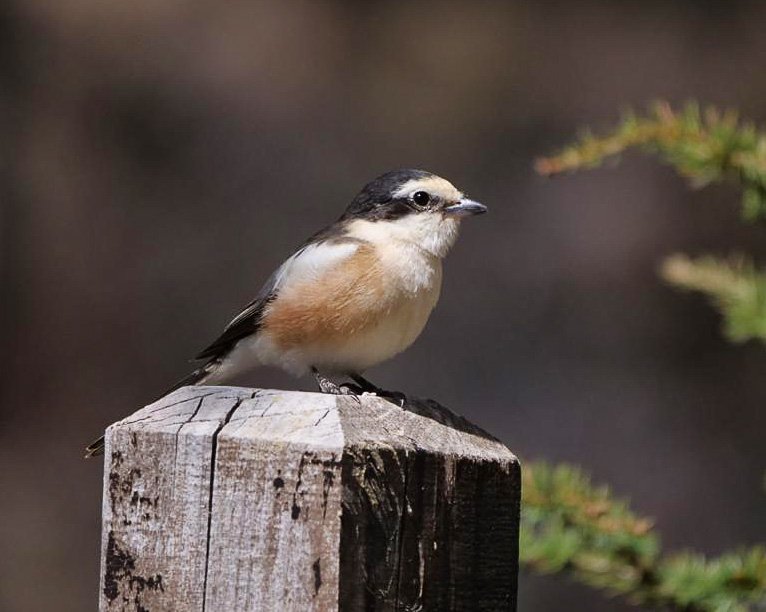
Tour Gallery
View a gallery of images for this tour below, click on an image to view as full size with caption
